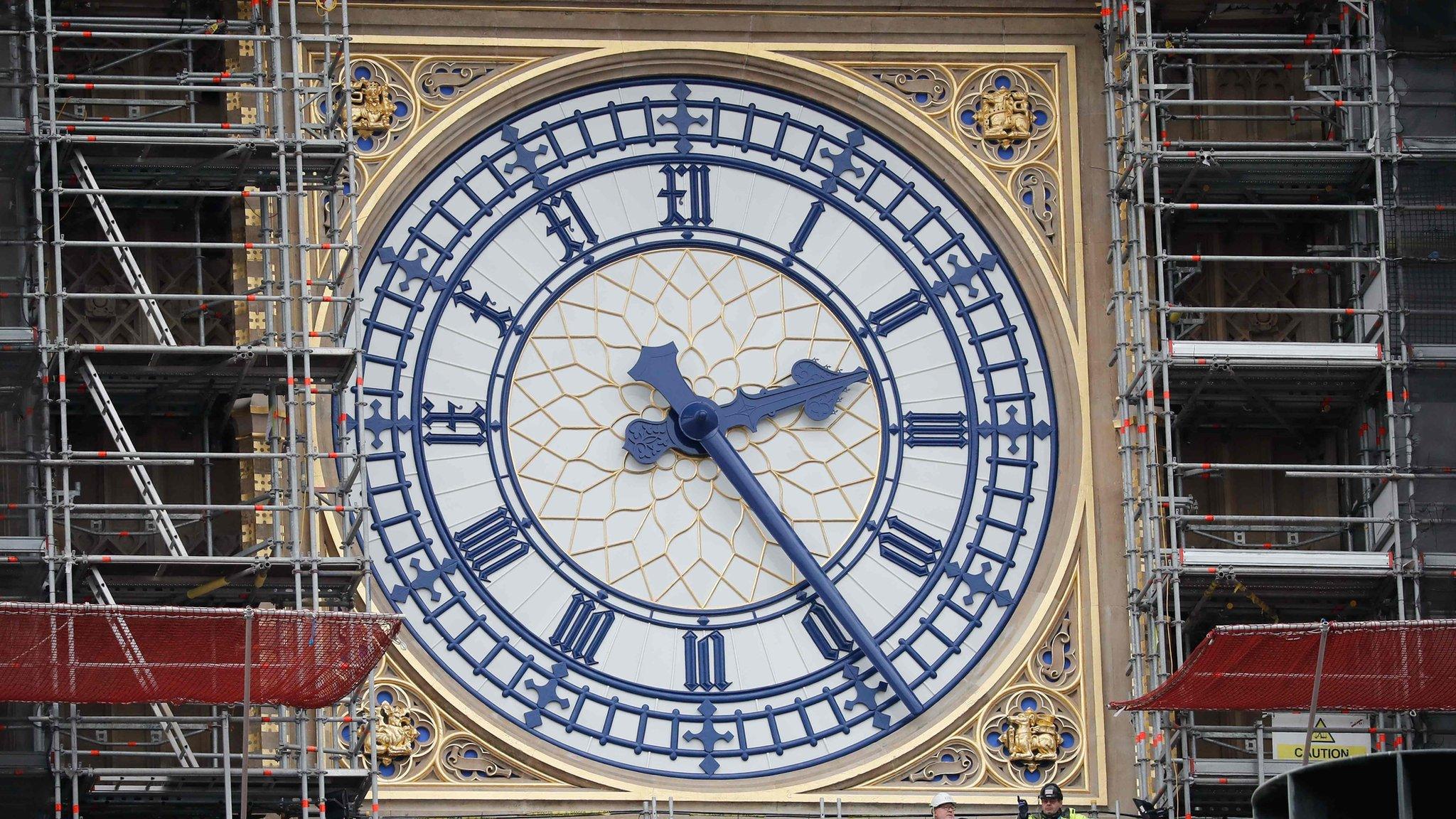The family that bought the King's bed for £100
- Published
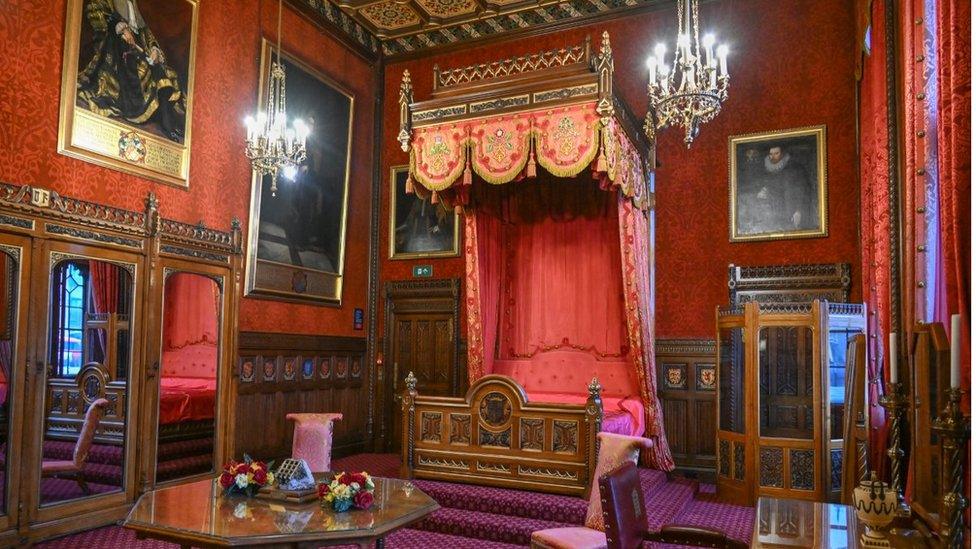
The state bed is still a feature of the Speaker's House
When Wendy Martin bought a mysterious old bed, elaborate but in pieces, she and her family knew it was special.
But it took 30 years for them find out its true purpose - to accommodate the monarch the night before their coronation.
King Charles will likely sleep in his own bed ahead of his coronation on 6 May 2023. However, if he wanted to be truly traditional he could sleep in the Palace of Westminster - also known as the Houses of Parliament - in the state bed.
The story of how the bed fit-for-a-king ended up with the Martins, in a Welsh woollen mill in Llandysul, Ceredigion, is an odd tale involving a Northamptonshire auction house and a frugal Speaker of the House of Commons.
"My family lived an odd life," says Richard Martin recalling his childhood. "We amassed a lot of things."
He grew up in Grafton Regis, a small village in Northamptonshire, along with his six siblings and parents Wendy and Ron, in a medieval house he describes as "rambling".
Wendy used to regularly attend local auction sales and one day in the mid-1960s came home with a bed, bought for £100 (around £1,500 in today's money).
"It was a magnificent thing," says Richard but also "ridiculously over the top - people would see it and say 'what the hell is that'."
"It had these very carved and gilded bits at the end of the post. It looked like little spires, like towers on a church.
"And there were these holes in the posts - as a child I had the idea that this was where you put your cigarette."
'Nervous of the mob'
Since William the Conqueror in 1066, there had been a tradition that monarchs would spend the night at the Palace of Westminster before they ascended to the throne.
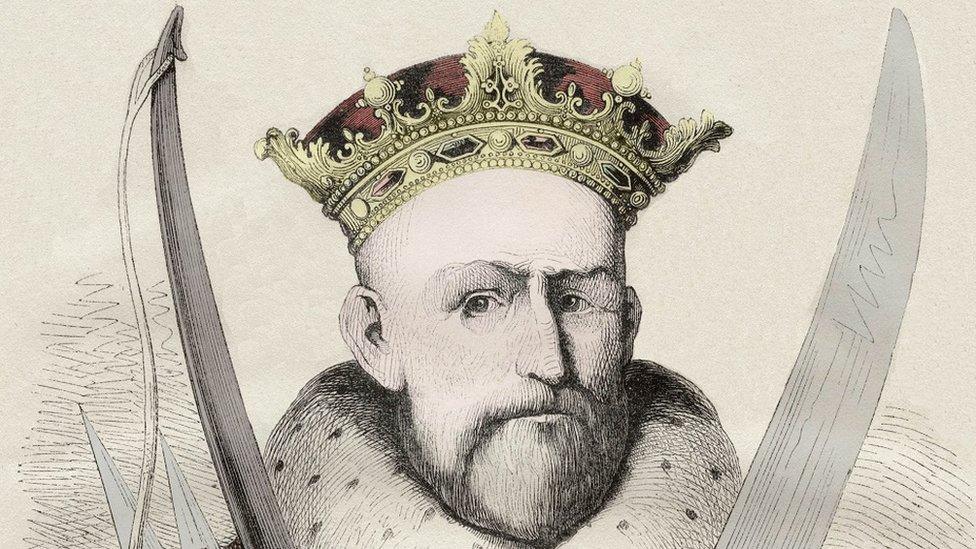
William the Conqueror began the tradition
For many years, the palace was the primary residence of the monarch, and given its close proximity to Westminster Abbey, where coronations take place, it made sense for the king or queen to stay there.
The tradition dwindled and the last monarch to stay in the Palace of Westminster was George IV in 1821, who is described in The Houses of Parliament: History, Art and Architecture book as being "not in the best of health... and perennially nervous of the mob" and therefore appreciated the short journey to the abbey. He was also a romantic and enjoyed replicating his forebears' traditions.
The state bed later suffered damage in a fire and a new one was built in 1859 measuring 6ft long and 12ft high, made of walnut with gilt inlay.
As grand as the bed is, none of the subsequent monarchs chose to take up the offer of a sleepover in Parliament.
Instead it sat in the Speaker's House - the official residence of the Speaker who presides over House of Commons debates - and stayed there until the 1940s when it disappeared.
It was not until the late 1970s, that one man began to ask questions.

The Martin Family at the christening of youngest son Benedict who was born in the state bed
In 1979, Clive Wainwright, an interiors expert at the Victoria and Albert Museum, gave a lecture during which he showed a picture of the bed and wondered if anyone knew where it could be.
Victorian flat-pack
A Telegraph journalist was in the audience and the paper later reported Mr Wainwright's plea: "It is the most important state bed designed in the mid-19th century. There were not many made... I wonder if it is lurking in storage somewhere, dismantled and forgotten."
As it turned out the bed was lurking somewhere, although not dismantled and not forgotten.
The bed Wendy Martin brought back from the auction was in 50 separate pieces and - like a Victorian flat-pack - had to be re-assembled, albeit without the instructions.
It was a challenge Ron greatly relished, although there was one piece that always ended up the wrong way round.
Despite the cumbersome nature of the object, it became part of the family's life.
Richard remembers taking his mother a cup of tea while she sat in the bed.
Ron and Wendy's youngest son Benedict was even born in it and when the family moved to a woollen mill in Wales, the bed went with them.
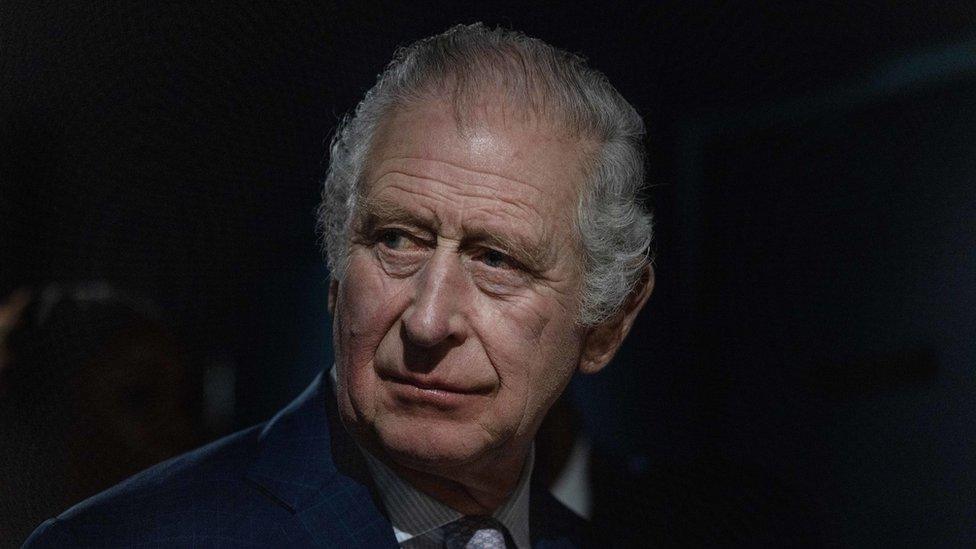
King Charles will sleep in his own bed for the coronation
It was while they were there that the Telegraph published Clive Wainwright's appeal to anyone who may have seen the bed.
Wendy got in touch with the Victoria and Albert Museum.
Clive died in 1999, but his widow Jane still remembers his joy when he heard the bed had been located.
The very next day he jumped in his car and drove through heavy snow from London to Wales to see if the Martins really had unknowingly bought the monarch's bed.
"He was delighted," she said. "He knew it immediately."
The Martin family weren't wholly surprised to learn of the bed's origins.
"Obviously we didn't know what it was... we just knew it was important. You couldn't see that bed and not realise it was something special," says Richard.
'Fuddy-duddy'
It seems odd that such an important piece of furniture could have been so easily mislaid.
Parliamentary historian Mark Collins explains that the bed was mothballed during World War Two, when Edward Fitzroy, the Speaker at the time, felt it was a bad look to be living in such grand surroundings during a time of war.
The bed was later put into storage and around the 1960s it turned up at the auction house in Northamptonshire, where Wendy Martin spotted it.
Richard Martin says: "It was the 60s, the government wanted to be modern and thrusting, it wanted to get rid of old fuddy-duddy stuff."
However, by the 1980s attitudes had changed and Clive Wainwright, along with Tory MP Sir Robert Cooke embarked on a campaign to get the bed back to Parliament.
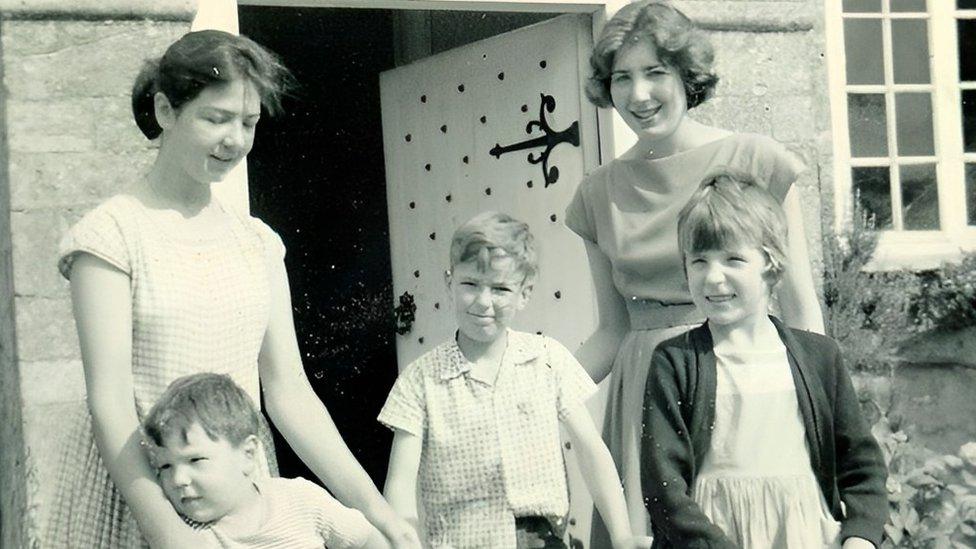
Five of the seven Martin siblings: Jenny and Anne at the back, Nick, Richard and Caroline at the front.
Reports from the time suggest the Martin family were initially unsure about selling.
"We've decided not to make any hasty decisions. We've slept in it for 15 years and it has great sentimental value," Wendy told the newspapers, while Ron said the bed was becoming a "fine attraction" for visitors to their mill.
However, after a year the family decided to give the bed back to Parliament.
It is not known how much they were paid, but estimates suggest the bed had a value of more than £20,000 at the time - far more than Wendy Martin had originally paid for it.
Richard says the family could have got a much higher price if they had sold it to a private buyer but decided it was right for the bed to return to Parliament.
"I think my parents felt they had performed a service by keeping it and looking after it, I think they were quite proud."
Returned to London, the bed underwent restoration - including adding expensive silk hangings - before being displayed in the Speaker's House, where it stands to this day.
People wishing to see the bed can book tours, external of the Speaker's House - including the bed - following Speaker Sir Lindsay Hoyle's decision to open the rooms up for tours.
Sir Lindsay said: "The fact that something as big as this could go "missing" and end up in a Welsh woollen mill years later seems quite incredible, but it just adds to the intrigue surrounding the bed.
"'It really is a national treasure."
- Published16 April 2019
